
_svg.png)

_svg.png)
TWICE AS FAR
SWISSAIR 111
CRASH INVESTIGATION
![]()
![]()
![]()
- THE RCMP'S RESPONSE -
CONLIN'S REPORT
The following four pages
make up the complete report issued by
the Office of the Commissioner of the RCMP
after two years of investigation
into alleged wrongdoings during the Swissair 111 crash investigation.
Assistant Commissioner Sandra Conlin,
as the head of the Office of the Ethics Advisor for the RCMP,
was tasked with the investigation.
A Canadian Government employed lawyer conducted the review for her.
As a former policeman of 32 years,
when I read what was written in the memo
and in particular on page three regarding the legality of the 'Change the Notes' demand,
I was shocked.
Any retired or present RCMP member should feel a sense of shame
that this was ever written on RCMP stationary
and signed off by a senior commissioned officer of the Force.
However, I now understand their reasons for this memo.
It became the instrument by which
senior RCMP management was able to fool the media and the public.
These people must answer to a Criminal Court Judge
for their actions and dereliction of their duties.
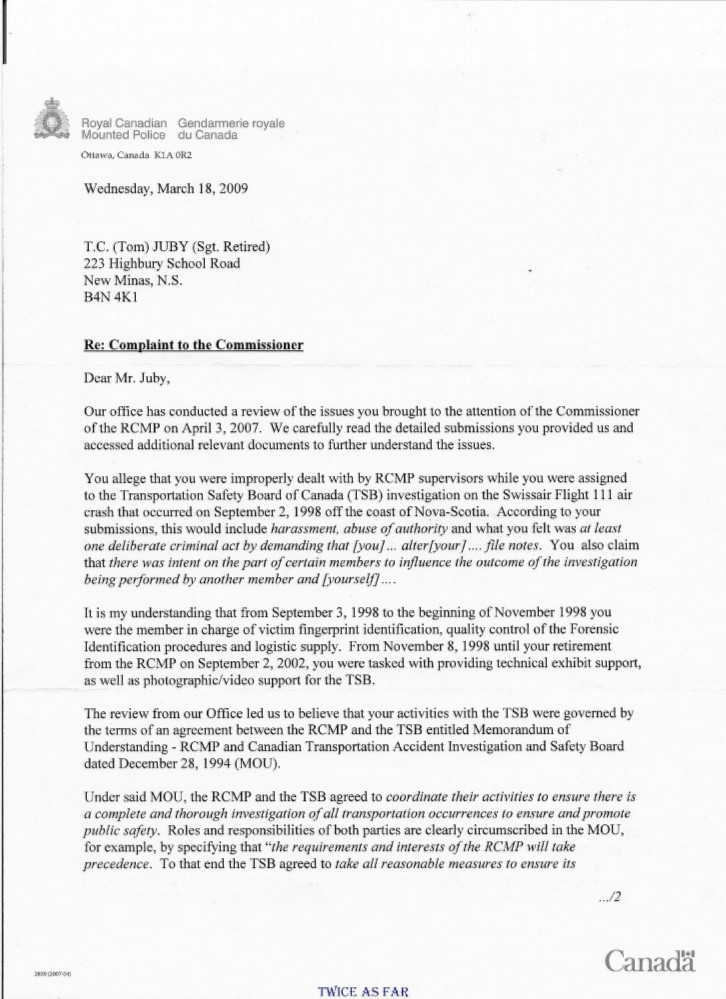 ;
;
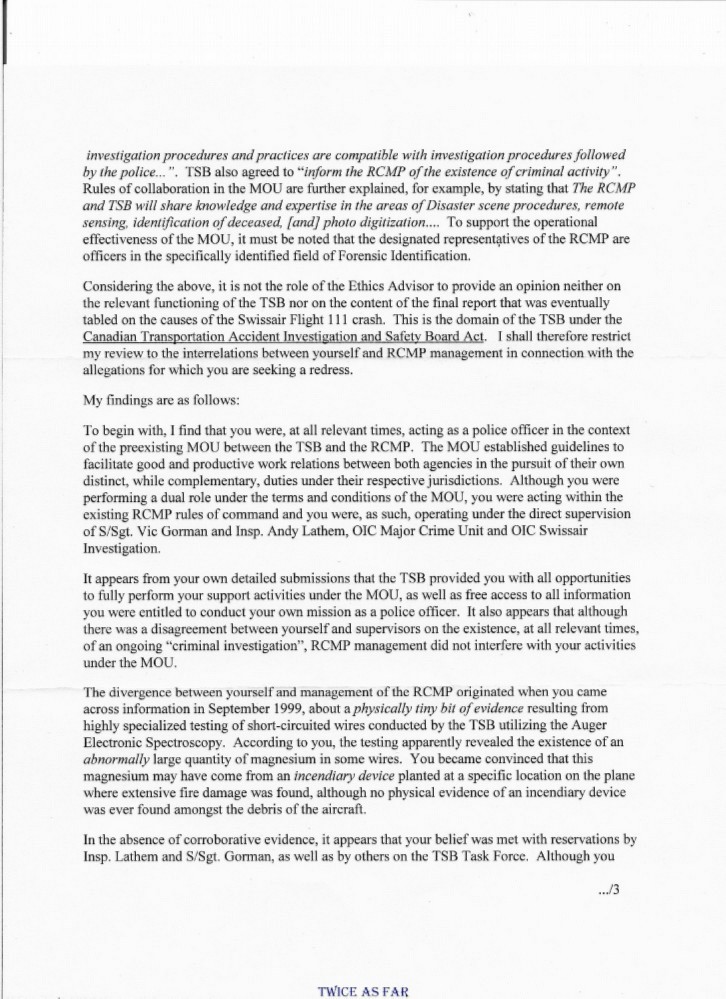
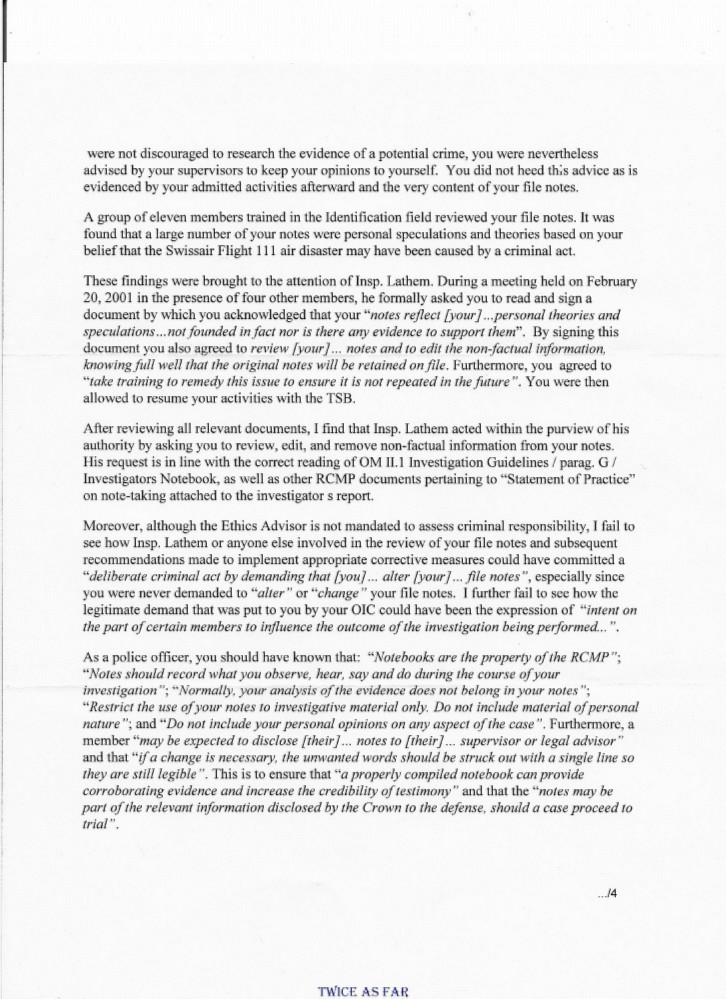
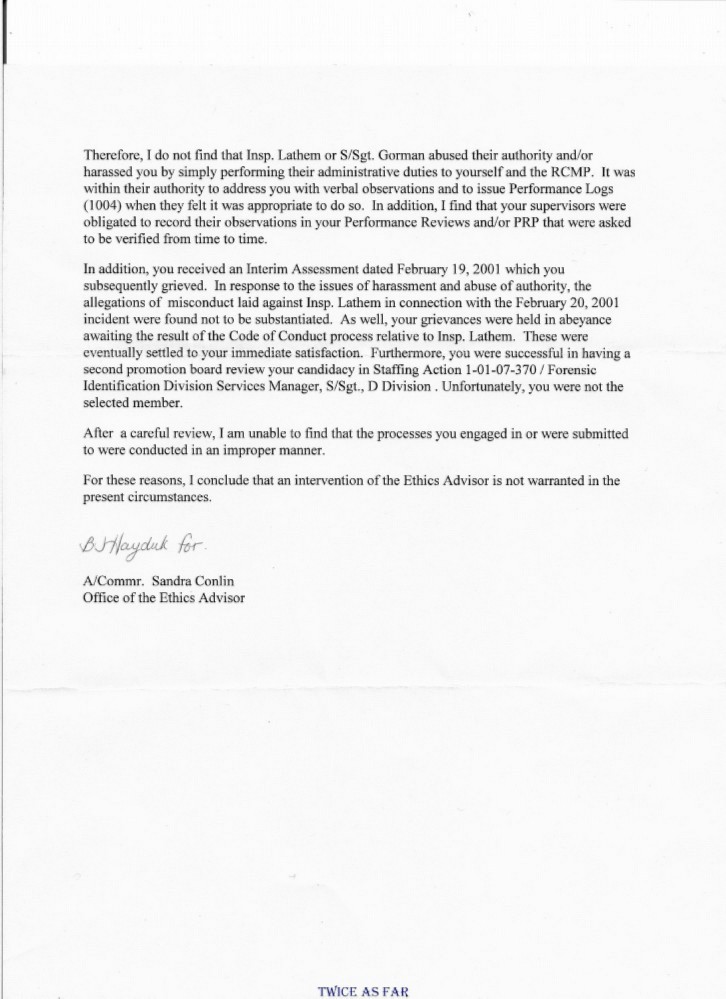
Going back again to the last paragraph on page #3,
there is a sentence that reads:
'a properly compiled notebook can provide corroborating evidence'
Is the notebook improperly compiled if it provides non-corroborating evidence
that does not support a conviction,
or in other words,
evidence of the innocence of the accused?
This point was raised with Conlin
and several years ago the policy was amended to remove those lines.
| ------------ SITE MAP ------------ |
My original memo to the Commissioner

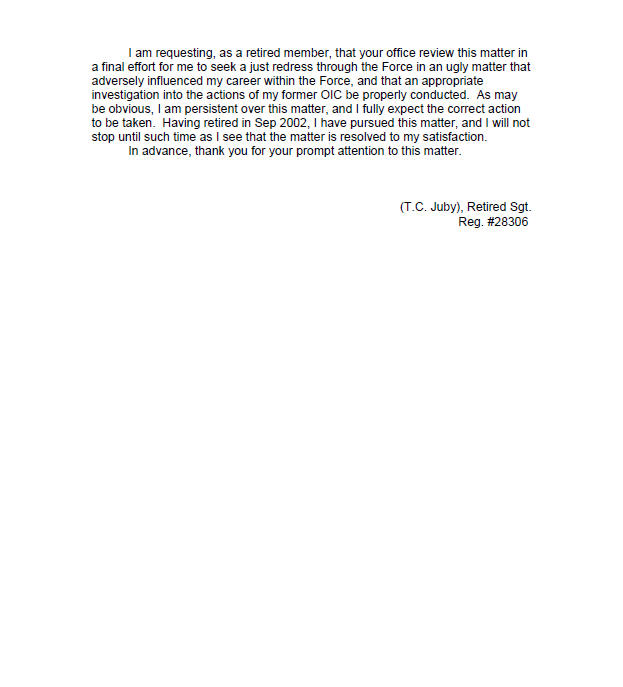
| ------------ SITE MAP ------------ |
* * * * * * * * * * * *
PORTIONS OF THE
ROYAL CANADIAN MOUNTED POLICE
POLICY MANUAL ON NOTE TAKING
Lathem, after the 'Change the Notes' meeting,
supplied a copy of the RCMP manual on note taking.
There are too many pages with not much material for them all to be presented here.
But some important points are presented here
that were brought to the attention of Conlin in the rebuttal memo.
Some of them are described in the book.

Note the sentence - 'As a permanent, ongoing record of events ...'
Permanent means 'unchanging'.
'Serve as a record of your conduct should questions arise.'
What about the conduct of others involved in the investigation?

Note the line - 'Do not include your personal opinions on any aspect of the case.'
This was another of the many points that were raised with Conlin.
Does it mean that an expert witness,
with an expert opinion,
cannot keep notes of that opinion?
The rebuttal to her memo closed in on the fact that,
as a former Forensic Identification Section member,
I had court accepted expert opinions on many subject matters in many cases.
Fingerprint identifications, physical matches, tire track identifications,
snowmobile track identifications, footwear idenfications, and fire cause and progression determinations
were just some of those areas.
She was told that the Force's policy was written by idiots who have never done field work
and who have never been to court,
and only fools and more idiots would adopt it as correct procedure.
The Force's note taking policy has now changed.
Paragraph 2.1 in the following
National Policy OM 25.2
provides that a properly compiled notebook
will corroborate evidence.
That implies that a notebook is improperly compiled
if it provides contradictory evidence

While the general public may at first look at this as dirty laundry of the Force being aired in public,
one must realize that this policy was set as procedural guidelines for members of the RCMP
who were conducting criminal investigations.
The notes that were made during those cases
resulted in people being charged and convicted in court.
While the vast majority of members who were conducting investigations ignored those policies
and did the right and moral thing,
there were the a like Lathem and Gorman who knew of that policy
and demanded that it be followed.
Gorman for years had worked on homicide cases from across the Atlantic Region.
They were the caseload of the Blood Spatter Section.
Lathem was the Officer in Charge of the 'H' Division Major Crime Unit.
As such
he was in charge of every major crime investigation
that occurred in the RCMP's jurisdiction for the Province of Nova Scotia.
HOW MANY OTHERS LIKE THEM ARE THERE?
* * * * * * * * * * * *
| ------------ NEXT PAGE ------------ |
| ------------ Home Page ------------ |
![]()
![]()
![]()
![]()